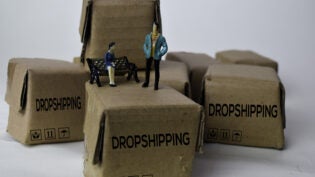
Is this a familiar experience? You have a great looking site, you’re creating super-helpful content and offers, and yes, people click on them and look around for a few seconds but then most of them just leave.
It can be one of the most disappointing and frustrating experiences for any marketer – but don’t despair – if this sounds like you, there are lots of things you can do to turn it around, all bundled up in the blanket term, Conversion Rate Optimisation or CRO to be a bit more wieldy.
In this first of a series of articles, we will look at how CRO works and how to approach it if you don’t have much traffic to your site.
Defining CRO
Let’s start with a definition. CRO is not an event or a technique, but a series of processes which use data about the behaviour of your visitors, clients, readers and target markets to make them engage with your business. And by ‘engage’ we mean meet a specific marketing goal which you have set.
The purpose of CRO is to increase the ratio of the number of people who are aware of you to the number of people who meet one of your goals – whether that is becoming a customer, a subscriber, a follower, or leaving details in a form for you to follow up.
CRO is fueled by data
The important thing to know is that CRO is a data-driven exercise which we try to improve engagement by examining the existing behaviour of visitors to your site, social media page or landing page. By altering different aspects of your visitors’ experience and measuring how their behaviour changes, CRO experts can build up a picture of what is drives positive behaviour and what diminishes it.
And if it all sounds a little bit like lab rats and people in white coats, that’s because, done well, it is as close to a scientific process as possible. We put forward a hypothesis based on previous experience and knowledge, test it and measure the results. We even call the different changes we make to the sites or landing pages, experiments.
Once we’ve examined these results, we can implement the results of experiments that we like and try a new experiment where we still need to improve.
Dealing with low traffic
If you’re only getting one sale from 25 visitors per month, you will have to wait a very long time before you can say that an experiment has increased your sales so what can you do?
The most important thing you can do is increase the data pool you’re working from. If you don’t have enough, you need to borrow some from elsewhere! How much is enough?
The rule of thumb that I’ve used to some degree of success is the “rule of 25 per day.” If there are fewer than 25 sign-ups/day to your landing page, you won’t be able know how changing the colour of the CTA button makes an impact on sign-ups. If you’re getting fewer than 25 clicks per day on your ad, you won’t know how changing the copy will affect clickthrough rates.
This rule of thumb is extremely rough and the scientists amongst you will recognise that this doesn’t come close to a true calculation of statistical significance. However, in the interest of speed and simplicity it gets you where you need to go.
Work with your biggest data set
As a young company, you may not be achieving many sales yet, but sales are not the only interesting thing.
Let’s take an ad campaign. In any promotional campaign you are sending your prospects on a journey. They have to see your wares, work out if what you’re offering actually solves a problem for them, and if the cost of solving that problem is worth it to them.
Then, some people will look at a completely different way to solve the problem that suits them better. And once they have decided that yours is the right approach, you still have to get past your competitors. No wonder start-ups with limited track records find it hard to make sales!
So, come back to the ad campaign – let’s imagine you’re running a campaign on LinkedIn or Facebook. If you’re generating 10 sales from 100 leads from 1,000 clicks on your ad, from 10,000 views of your ad, it will be very difficult to optimise the lead to sale conversion rate because there simply isn’t enough data to play with.
But it’s easy to experiment with the ad-view to click rate (CTR) because you do have the data there. We’ll look at this in more detail in a later article but I will just state this for now: if your conversion rate doubles at any point in the journey we’ve just described and all the other conversion rates stay the same, your revenue will double. So, if you don’t have enough sales to do CRO, focus on the beginning of the journey and you will still make an impact.
In the next article we will focus on how to generate more traffic, which will provide more options for CRO experiments as well as a faster impact on your bottom line.
2070 Views












